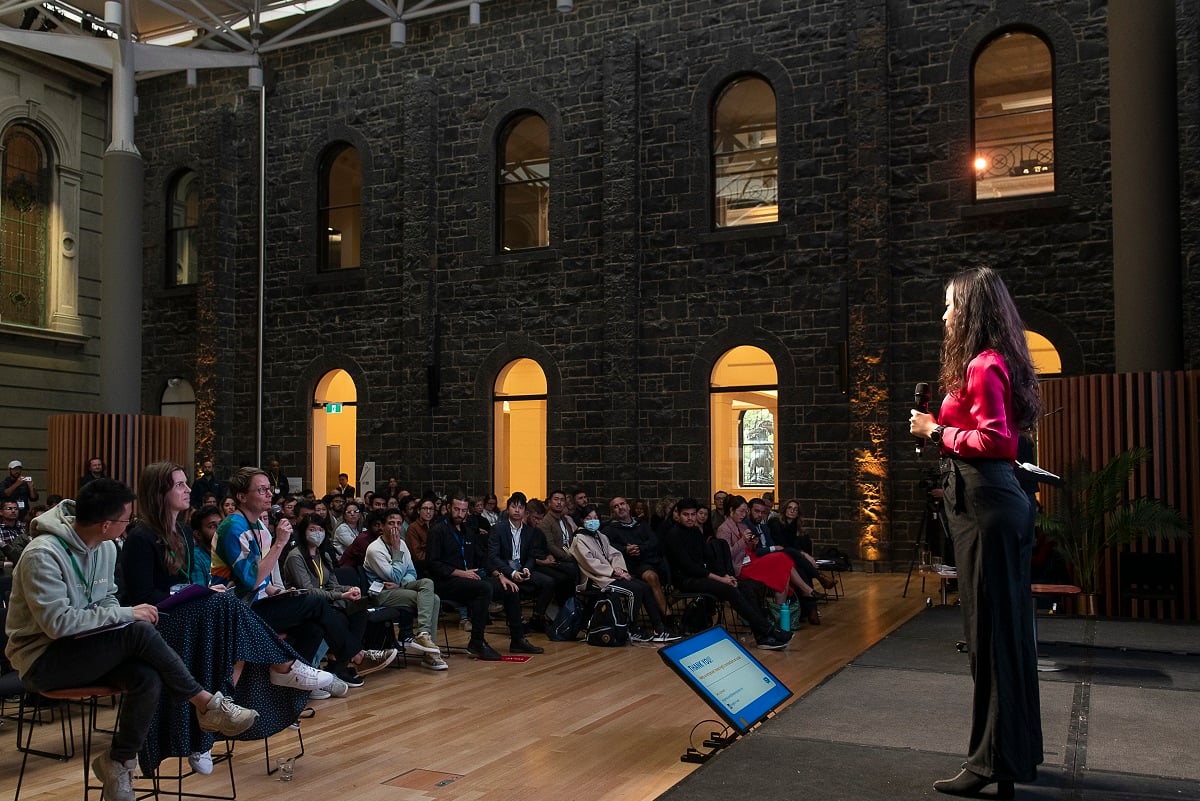Working in Australia, Writing a Resume
You may wonder what is the best way to apply for a job in Australia? If so, this article aims to help you with the steps to get your resume ready for the job application.
So much less to worry about… with our step by step guide and free templates!
Your resume (or CV), is your secret weapon. It is your most powerful marketing tool to promote yourself. In a competitive marketplace simply having a resume isn’t enough to get you an interview. So we’ve compiled these easy to follow steps, to help guide you on your way to create a resume that will help open doors!
A resume is usually the first point of contact between you and your potential employer – so you will want to make sure it counts. As per the English expression: “You will never get a second chance, to make a great first impression!”
Step 1: Choose the right resume format
There are three types of resume formats: reverse chronological, functional or skills-based, and a combination of the two. The choice depends on the type of job you’re applying for and your level of experience.
1) Reverse chronological resume format – This is the most popular resume format, where your most recent experience is listed first. This is ideal for people with plenty of work experience relevant to the position they’re interested in.
2) Functional or skills-based resume format – This format prioritises your most relevant experience. If you lack relevant work experience because you are a student/recent graduate, or you’re looking to make a career change, the skills-based format may be a better choice.
3) Combination resume format – The combination resume is a good option for jobseekers to feature diverse skills. This is useful if you’re applying for a role that requires expertise in 3-4 fields, as it enables you to arrange your relevant experience to ensure this is viewed first.
Hot tip: If in doubt about which resume format to use, stick to the reverse-chronological resume format. This is the most common resume layout. To learn about resume format options to help your application stand out, please refer to the Reading Suggestions at the end of this post.
Step 2: Find a layout for your resume
There are hundreds of layouts available all over the internet, from Word doc templates to more creative Adobe formats.
As mentioned early, if in doubt there is nothing wrong with choosing a traditional format. However, you may increase your chances of standing out from the other applications with a more creative layout that allows you to showcase more within a 2 page format.

Hot tip: Alternatively, for a creative option check Canva (canva.com), which provides many layout options, like the one top right above. Click here to start editing this template.
Step 3: Resume content
Whichever format and layout you decide on, there are mandatory sections to include in your resume content. We’ve broken these sections down with tips and referenced these on our layouts for convenience!
3.3 Work Experience (and Achievements)
3.6 Optional – Awards, Publications, Projects, etc.
3.1 Contact Information
Double-check your contact information and make sure everything is correct and up to date.
Must-have information
- First name/last name
- Phone number
- Location (your physical/postal address)
- Email address – keep it professional:
- Do use: [email protected]
- Don’t use: [email protected]
Optional information
- Your current job title e.g. “Junior Data Analyst”
- LinkedIn URL
- Other social media links (including portfolio platforms such as Behance, or Dribbble)
- Website/blog
What NOT to include: You are not legally obliged to include your marital status, age, religion, date of birth, photo or dependants on your resume. In fact, it is illegal for employers to ask these questions. The employer does not need to have this information for their decision-making process to evaluate your application.
3.2 Professional Profile
Companies can receive hundreds of job applications and may only spend a small amount of time scanning a resume to check if it meets the requirements. We cannot stress it enough, don’t miss this opportunity to make an amazing first impression!
Along with your Cover Letter, don’t underestimate the power of including a Professional Profile (often referred to as a summary or objective). Usually this is the first few lines appearing on a resume. The profile should be a succinct 2-3 sentences. The differences between Summary and Objective is about your level of experience in the field you’re applying. For example, if you already have relevant work experience, you’ll use this valuable space to sum it up. However, if you’re new in the workforce, or changing career, you can utilise this space to give focus on your goals and career objectives.
3.3 Work Experience (and Achievements)
So, you’ve cut through the pile of applications with a knock out layout and killer profile. Now you’ve come to the most important part of your resume – your work experience. Here are the basics:
- Job title
- Your job title must be clearly displayed for each position, this will help to communicate at a glance that you have relevant work experience and should be shortlisted for an interview.
- Company name/location/description
- Always include the employer, the location and if the organisation is not very well know, you may briefly describe the company.
- Achievements and responsibilities
- Make sure you list your responsibilities, highlighting genuine key achievements from your time in that position. Key stats are an effective way to draw attention to these achievements, think % improvements or $’s saved.
- Dates employed
- The timeframe of your employment is crucial. The standard format is month and year (MM/YYYY) this is important as your job application may be parsed by an Applicant Tracking System.
3.4 Education
Include all your relevant qualifications to help leverage your resume above the competition! Don’t limit this section to only academic qualifications, you can also highlight additional courses that you think are relevant for the role you’re applying.
- Program Name e.g. “B.A. in Business Administration”
- Institution Name e.g. “Australian National University”
- Period Attended e.g. “08/2013 – 07/2018”
- (Optional) Academic Score e.g. “3.9 GPA”
- (Optional) Honours e.g. Cum Laude, Magna Cum Laude, Summa Cum Laude.
- (Optional) Academic achievements – Any interesting papers you’ve written, courses you’ve excelled in, etc.
- (Optional) Minor e.g. “Minor in Psychology”
3.5 Skills
This space on your resume provides the chance for you to highlight both your knowledge and personality. Clarify your technical ability to perform and highlight your personal attributes that demonstrate how you may be better qualified against the other candidates.
Don’t forget to include any languages other than English as a skill. Language can be scored as:
- Native
- Fluent
- Proficient (Enough knowledge to pass by in a professional environment)
- Intermediate
- Basic
3.6 Optional – Awards, Publications, Projects
The position you’re applying may not require any additional information about your personal interests. While not a game-changer, including your interests can help present more facets to your skillset, personality and motivations. So, if you have any of the below, don’t be afraid to show them off!
- Awards and/or voluntary work – Always highlight these as this may help boost your chances to get hired and also provide other discussion topics for a well-rounded interview.
- Publications – If you have any published works (online or in an academic journal), these may be relevant to include in your resume. Make sure to include an up to date URL as a reference.
- Projects – Working on side projects can really show off your passion for your field. Whether they’re university class projects or part-time entrepreneurial endeavours, they’re both equally relevant.
- Hobbies and Interests – Who knows, maybe you and your interviewee have some hobbies in common? E.g. “Read, play board games, cook…”
Checklist for Resume Writing
- Does your contact information section have all the must-have info?
- Is your contact email professional? E.g. [email protected]
- Are you using the right resume format for your experience?
- Is your resume 1-2 pages?
- Are you happy with the layout?
- Did you list only the most relevant work experiences?
- Did you highlight your achievements, rather than just noting your responsibilities?
- Did you tailor your resume to the job ad you’re applying for? E.g. Use the profile section to help ensure relevancy.
- Did you mention the right amount of work experience in your resume?
- Did you list your education in your resume?
- Did you list all the right skills for the position you’re applying for?
- Did you include any of the optional information – awards, publications, voluntary work, projects or personal interests?
- And finally, did you proof-read your resume? We’d recommend asking a friend or using software like Grammarly or ProWritingAid.
Congratulations if you’ve checked YES to all the items above,
you’ve successfully tailored your resume to your dream job!
We wish you all the best on your job search!
Reading suggestions
- Resume Genius: How to write a resume
- SEEK: What employers have no right to ask
- Zety: 50+ Resume Objective Examples: Career Objectives for All Jobs
- Monster Career: Entry-level resume objective examples are outdated – use a career summary instead
- Canva: 10 resume templates to help you get your next job






